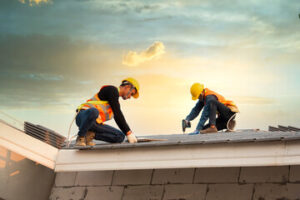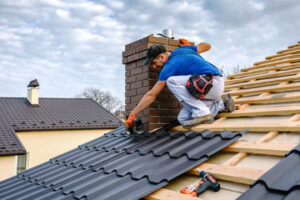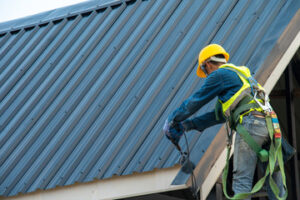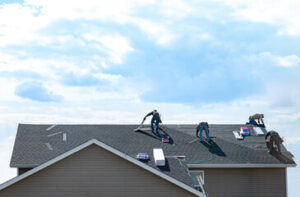The best way to protect your roof is through regular inspections and preventative maintenance. This includes removing debris, patching holes and cracks, reinforcing materials, and ensuring proper ventilation.
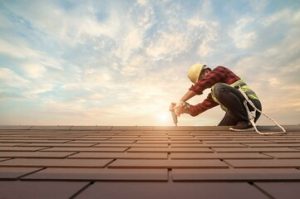
Gutter maintenance is also important to avoid clogs that lead to water ponding and other problems. Trimming trees that are too close to the house can help as well. Contact Cedar Park Roof Repair for professional help.
Whether they’re missing, curling, or broken, damaged shingles can allow moisture to leak into the attic and damage the roof structure. In addition, moisture from unchecked shingle damage can spread to surrounding shingles and lead to more expensive repairs down the road.
Fortunately, many shingle and tile roofs can be repaired without replacing them completely. Identifying shingle damage quickly, though, can prevent further problems and help you avoid more costly repairs down the road.
Look for granule loss: If you see small piles of shingle granules in the gutter or at the base of downspouts, this is a sign that your shingles are losing their protective layers and may need to be replaced. Unprotected granules leave the asphalt in your shingles exposed, which causes them to crack, break, and crumble over time.
Leaks and Water Stains: Interior water stains or a leaking roof are sure signs that your shingles are in need of repair or replacement. If left unchecked, this moisture can damage the wood framing of your roof, leading to mold and rot and potentially impacting the structural integrity of the home.
Missing Shingles: Even a strong storm with high winds can dislodge a few shingle or two, leaving areas of your roof open to water leaks and potential further damage. If you’ve lost a few shingles, check with a professional to ensure that the damage isn’t more extensive and that your insurance will cover the cost of repair.
Shingle Cracks: If a shingle cracks but is still structurally sound, apply roofing sealant to the cracked area and press it down firmly. Be sure to weigh it down with a brick until the sealant has dried to prevent the shingle from curling back up.
A well-maintained roof is a major selling point for your home, so it’s important to address shingle damage immediately as it occurs. Doing so can prevent further damage, save you money on expensive repairs, and increase the value of your property. Contact a local roofer to conduct an inspection and provide a detailed assessment of your roofing system. They can also assist you in working with your insurance provider to file a claim for wind-damaged shingles.
Leaks
One of the most common signs that your roof needs repair is water leaking through the ceiling into the house. This can cause mold, mildew, and damage to the walls and ceilings. Often, the leak is caused by damaged or missing shingles, roof flashing problems, clogged gutters, or puncture holes from falling debris. Once the source of the leak is identified, a skilled roofer can replace the damaged shingle and stop further rainwater intrusion into your home.
In order to spot the location of a roof leak, you will need to do a little investigative work. You can start by going into your attic on a rainy day and using a flashlight to check the decking for wet spots or stains. If you have access to a ladder, it may also be helpful to examine the roof from the outside. Make sure to look around areas like the roof valleys, roof ridge, and around chimneys and vents.
If you cannot find the source of the leak from inside your home, you can use a garden hose to simulate rainfall. Have someone stay inside to watch for signs of water intrusion, such as stains on the ceiling or wall. Once the spot is located, have them mark it so that the roofer can fix the leak.
While this can be a good temporary fix, it is important to have your roof leak repaired as soon as possible. If you wait too long, it could lead to serious damage to the interior of your home, such as mold and mildew growth or drywall cracking.
If you haven’t already, consider having your roof professionally repaired by a roofing expert. Roofers, such as Big D Roofing, are trained to identify and quickly locate the source of a roof leak. They will then create a game plan to get the leak fixed and your home protected from further damage. Contact Big D Roofing today to request your free roof inspection and estimate! We serve homeowners in Dallas and the surrounding areas of Texas. We proudly offer a wide range of residential and commercial roofing services including new roof installation, roof repairs, re-roofing, and roof replacements.
Damaged Flashing
Flashing is a crucial component of your roof, and is often the first area to show signs of wear and tear. It is used to seal areas around chimneys, skylights, roof valleys, and vent pipes, and protects against water infiltration that could cause wood rot and structural damage to your home. Proper flashing installation techniques include securely fastening the material to the roof, and ensuring that the material properly overlaps adjacent roofing materials. Flashing should also be regularly inspected and maintained to identify any damaged sections, and quickly address them to prevent water infiltration.
Common signs of flashing damage include visible rust or corrosion, cracks, gaps, or loose sections. These issues may be caused by poor construction, or simply by age and exposure to the elements. If left untreated, these problems can lead to leaks and other long-term damage. Water stains on ceilings and walls are also a common sign that flashing is leaking or allowing water into the home.
To repair your roof flashing, you will need a ladder and proper safety equipment to access the affected area. Before you begin, it’s important to remove any large debris like leaves, branches, or dirt that might be clogging the flashing and trapping moisture against the roofing material. Then, you will need to gently pry up and remove any shingles that are covering the damaged section of the flashing. Be sure to use a non-slip ladder, and use gloves to protect your hands from the sharp edges of the shingle.
Once the faulty flashing is exposed, you will need to clean the area, and then carefully remove any nails or screws that are holding it in place. It is also a good idea to apply a coat of roof cement over the exposed area to help reinforce it and protect against future leaks. Finally, you will need to cut and apply flashing tape to the joint, and roll it firmly to smooth out air bubbles and ensure a strong, waterproof seal.
Regular maintenance and inspections are the best way to keep your roof in good shape, and to spot any damage or problems early on. Keeping up with these routine tasks will extend the lifespan of your roof, and help you avoid expensive repairs in the future.
Valley Damage
While leaking roofs may seem like a minor problem, left unchecked it can lead to expensive structural damage and water infiltration into your home. One of the most common trouble spots is the roof valley, where two sloping roof sections meet and channel rainwater and snow into gutters. But when a roof valley becomes damaged, it can lead to water intrusion and rot. So it’s important to inspect and repair this area promptly.
Whether caused by storms, age or poor installation, a roof valley that leaks is a serious issue. Persistent moisture promotes mold and mildew growth, affecting air quality inside your home and creating health hazards. It also damages the attic, drywall and insulation and can ruin electrical systems. The good news is that with a little effort, you can fix a roof valley yourself and prevent expensive repairs in the future.
Start by removing any damaged shingles and loose or hanging bits of debris from the roof. If the metal flashing in the roof valley is damaged, carefully remove it with a pry bar, being careful not to damage surrounding shingles. If the flashing is still intact, it can usually be reused, but replacing it will give you better protection from leaks.
The next step is to prepare the area for a new installation of shingles and flashing. Ensure that the flashing extends up each slope of the roof and is properly nailed down, with nails spaced at least 6 inches apart to avoid puncturing the valley. Next, apply a waterproof underlayment to the valley and over each slope of the roof, securing it with roofing cement.
Finally, apply the new shingles to the roof, overlapping them by about 3 feet on each side of the valley and nailing them down at the center of the shingle rather than near the valley edge. Spread a thick coating of roof cement over the patch to further seal out water.
Although repairing a roof valley can be challenging for even a confident DIYer, the process is well worth it for the long-term integrity of your roofing system and the protection of your home. The right approach to shingle, flashing and underlayment replacement will ensure that your repair is both thorough and long-lasting.

